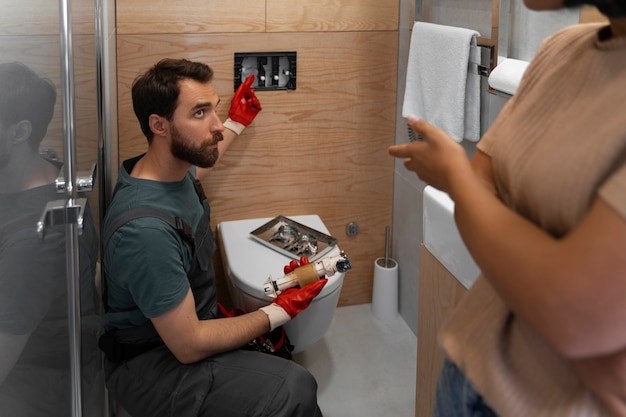
Transform Your Bathroom with a Bathtub to Shower Conversion
Transforming a bathroom from a bathtub-centric space to a more accessible and modern shower area can significantly enhance its functionality and aesthetic appeal. This change is not only practical but also a wise investment, particularly for those looking to increase the value of their home. Whether you are looking to save space, improve accessibility, or simply refresh the look of your bathroom, a bathtub to shower conversion may be the perfect solution. This article provides a comprehensive overview of the conversion process, its benefits, and key considerations to keep in mind.
Understanding the Benefits of a Bathtub to Shower Conversion
There are several compelling reasons to consider converting a bathtub into a shower:
- Space Efficiency: Showers typically consume less space than bathtubs, making them ideal for smaller bathrooms.
- Accessibility: Showers can be designed to be more accessible for individuals with mobility challenges, offering features such as grab bars, non-slip flooring, and seating options.
- Modern Aesthetics: A sleek, glass-enclosed shower can give a bathroom a modern and stylish appearance.
- Water Conservation: Showers generally use less water than baths, contributing to more sustainable water usage.
Key Considerations Before the Conversion
Assessing the Existing Space
Before initiating the conversion process, it is crucial to evaluate the current layout and plumbing. This assessment will determine whether the existing plumbing can accommodate a shower and if additional modifications are necessary. For detailed information on evaluating bathroom plumbing, find additional information here.
Design and Functionality
When choosing the design for your new shower, consider both style and practicality. Options range from simple shower stalls to elaborate walk-in showers with multiple showerheads. Prioritize features that enhance usability, such as built-in storage or adjustable showerheads. Learn more in this detailed guide about designing a functional shower space.
Budget and Costs
The cost of converting a bathtub to a shower can vary significantly based on the materials selected, the extent of the renovation, and labor costs. Create a detailed budget that accounts for all aspects of the conversion, including potential unexpected expenses. Explore further insights here on budgeting for bathroom renovations.
Steps Involved in the Conversion Process
Planning and Design
The first step in the conversion process is planning the design and layout of the new shower. This phase involves selecting materials, fixtures, and any additional features. Consulting with a professional designer can help ensure the design meets all functional and aesthetic goals.
Demolition and Preparation
Once the design is finalized, the existing bathtub and surrounding area will be removed. This phase may involve plumbing adjustments and electrical work if new lighting or ventilation is required. Ensure that this work complies with local building codes. Read more about this topic concerning building regulations and compliance.
Installation
The installation phase involves setting up the shower base, walls, and doors, followed by the incorporation of chosen fixtures and features. This stage requires precision to ensure everything is watertight and properly aligned.
Final Touches
After installation, focus on the finishing touches such as painting, tiling, and installing accessories like towel racks and mirrors. These elements can enhance the overall look and functionality of the bathroom.
Maintenance and Care Tips
Post-conversion, maintaining the new shower is essential to ensure its longevity and performance. Regular cleaning and inspection of the fixtures will help prevent build-up and detect any issues early. Non-abrasive cleaning materials are recommended to preserve the finish of the shower components. Find additional information here on maintaining various bathroom fixtures.
In conclusion, transforming a bathtub into a shower can significantly improve the functionality and aesthetic of a bathroom. With careful planning and consideration of the factors discussed, homeowners can create a space that is both beautiful and practical. For more detailed guidance, explore further insights here.